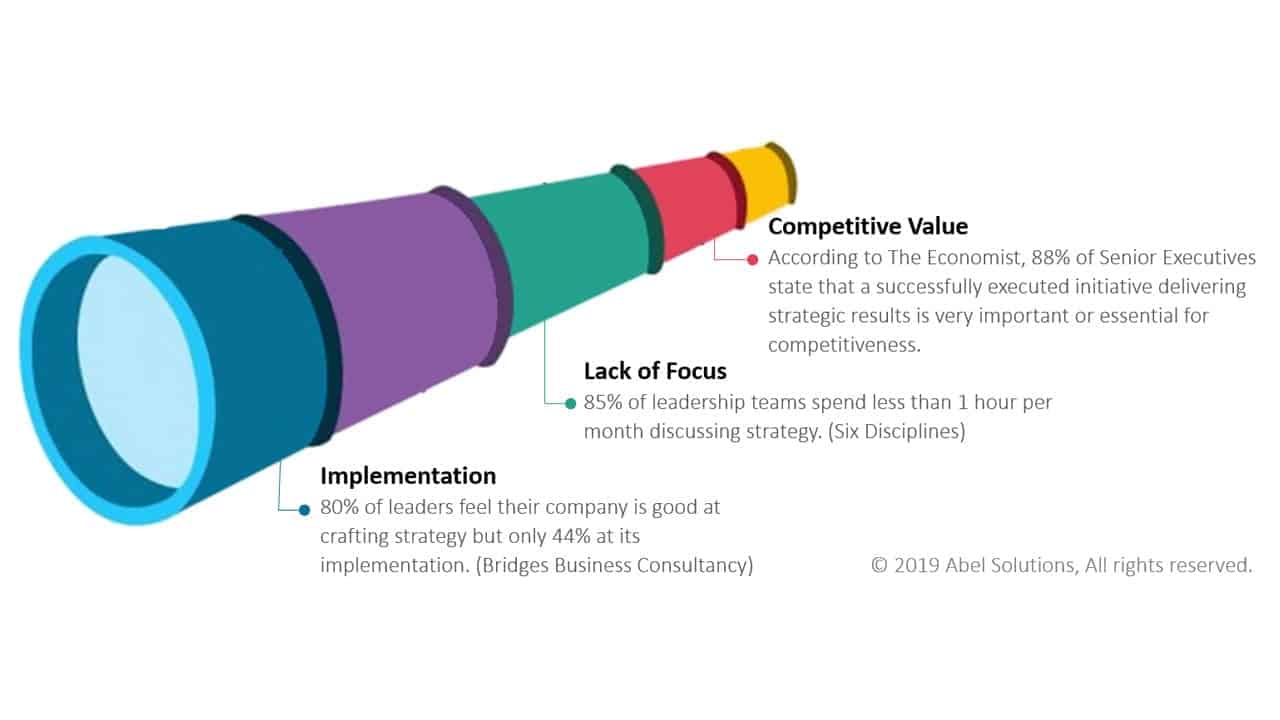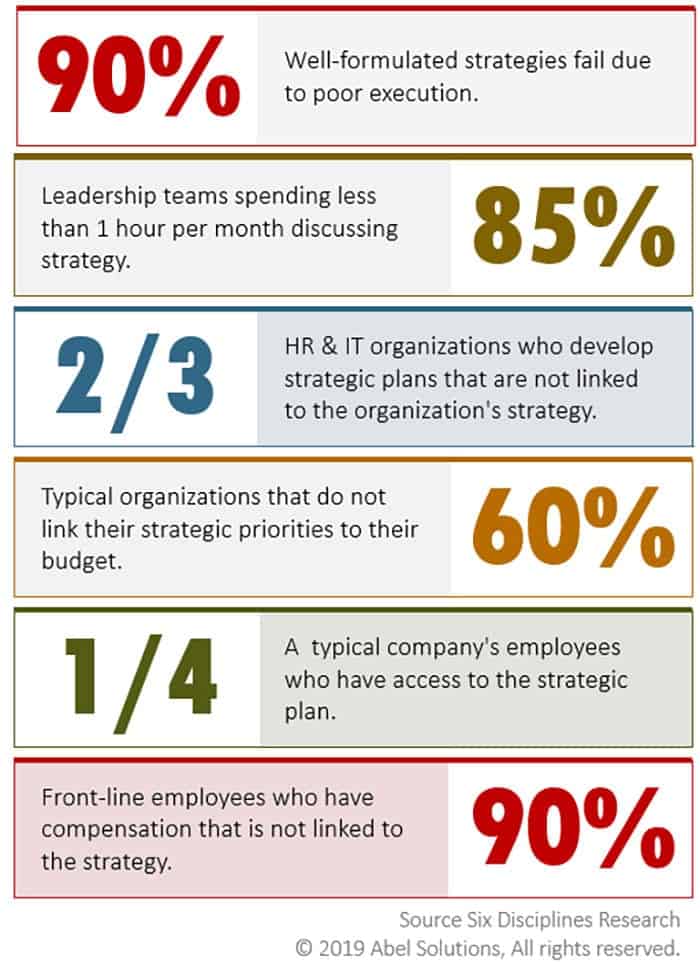[vc_row][vc_column][vc_column_text]
“When you fail to plan, you plan to fail”
Strategic planning has been a discipline practiced by many organizations to maximize their effectiveness. Strategic planning is not new or novel; it got its start in the 1960s and is still ubiquitous amongst high performing, successful organizations. Strategic planning is defined as a disciplined effort to produce fundamental decisions that shape and guide what an organization does and why.
In today’s competitive marketplace, an organization’s differentiation comes not only from the ability to see market shifts but through the ability to set themselves apart by carrying out the necessary strategic response as quickly as possible.

According to The Economist, 88% of C-executives state that a successfully executed initiative delivering strategic results is very important or essential for competitiveness.
Strategy is made in real-time, not during an artificial “strategy session.” The goal of the strategic planning process is to ensure that the key decision makers:
- have a solid understanding of the business,
- share a common fact base,
- moreover, agree on important assumptions.
Organizational effectiveness balances the need for operational efficiency while achieving strategic results. These elements are crucial for the “prepared mind” and serve as the foundation upon which good strategic decisions are made throughout the year.
Transformation from strategy to reality
Strategy becomes tactical when the translation of concept is made tangible. Research has identified that 90% of well-formulated strategies fail due to poor execution; three of the largest contributors to failure are communication, budget and skills.
Executive leaders are critical for ensuring that strategy is communicated. This requires more effort than just creation; it requires regular attention and visible advocacy throughout the organization. Communication through a change management process does not have to be formal but having a structured and intentional process is critical. Leadership engaged throughout the organization is key.
Allocating funds to achieve strategic initiatives is the second key factor in ensuring successful implementation. The adage, “put your money where your mouth is” applies in this case. While communication is important, if the funding is lacking or does not exist then the initiatives fail. This includes ensuring that leadership and employees have compensation that is linked to the strategy.
Insufficiencies in skills, combined with poor resourcing, are also factors affecting the success of strategic initiatives. Many organizations lack both the skills and resources required to complete the activities for change. Employees are burdened with existing responsibilities or need to acquire new expertise; these obstacles often time transformation.
Catalyst for Transformation
Strategy through implementation is the catalyst that transforms the organization. Building a strategy, preparing leaders and employees for execution requires a catalyst. Engage with Abel Solutions and create that catalyst to develop your plan.[/vc_column_text][/vc_column][/vc_row]
This Abel Insight written by Abel Solutions’ Chief Technologist, Jason Bell







